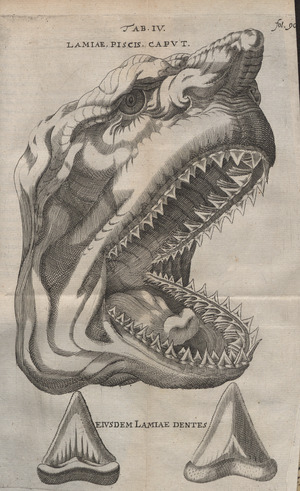Nicolaus Steno facts for kids
Quick facts for kids
Nicolas Steno
|
|
|---|---|

Nicolas Steno
|
|
| Born | 1 January 1638 |
| Died | 25 November 1686 (aged 48) |
| Nationality | Danish |
| Scientific career | |
| Fields | Anatomy and geology |
Nicolas Steno (born January 1, 1638 – died November 25, 1686) was a Danish scientist and religious leader. He was a pioneer in two important fields: anatomy (the study of body structures) and geology (the study of Earth's rocks and history).
In 1659, Steno decided to stop just reading books. Instead, he wanted to discover things for himself. Because of his important discoveries, he is often called the "father of geology" and "father of stratigraphy". Stratigraphy is the study of rock layers.
Contents
Discovering Fossils and Geology
Steno was very interested in how solid objects could be found inside other solid objects. This included things like fossils, minerals, and even whole layers of rock.
How Fossils Formed
Steno studied shark teeth. He realized that the "tongue stones" people found were actually ancient shark teeth. He figured out that the chemical makeup of fossils could change. But their original shape would stay the same.
He was not the first to say that fossils came from living things. Other scientists like Robert Hooke and John Ray also believed this. But Steno's work was very important.
Steno's Rules for Rock Layers
In 1669, Steno published his ideas about geology. His book was called De solido intra solidum naturaliter contento dissertationis prodromus. This means "Preliminary discourse to a dissertation on a solid body naturally contained within a solid."
In this book, he wrote down some basic rules for understanding rock layers, which are now called the principles of stratigraphy:
- Principle of Superposition: This rule says that in undisturbed rock layers, the oldest layers are at the bottom. The newest layers are at the top. Imagine stacking books; the first book you put down is at the bottom.
- Principle of Original Horizontality: This rule states that rock layers are usually laid down flat. If you see layers that are tilted or folded, it means something happened to them after they formed.
- Principle of Lateral Continuity: This rule means that rock layers spread out in all directions. They continue until they hit something that stops them. Think of a pancake batter spreading out in a pan.
- Principle of Cross-Cutting Relationships: This rule explains that if something cuts across a rock layer, it must be younger than the layer it cuts. For example, a crack in a rock must have formed after the rock itself.
Related pages
Images for kids
-
Portrait of Niels Steensen (1666–1677). Unsigned but attributed to court painter Justus Sustermans. (Uffizi Gallery, Florence, Italy)
See also
 In Spanish: Nicolás Steno para niños
In Spanish: Nicolás Steno para niños




